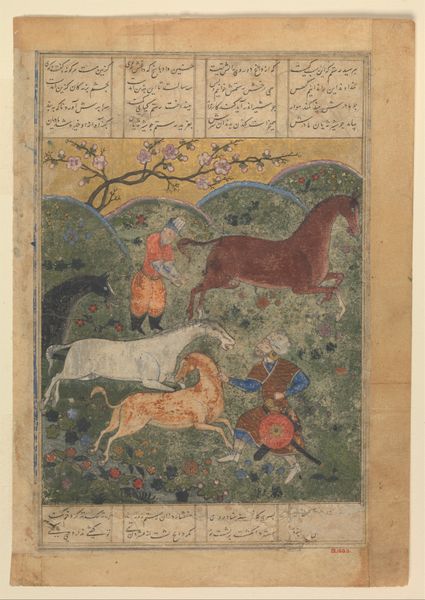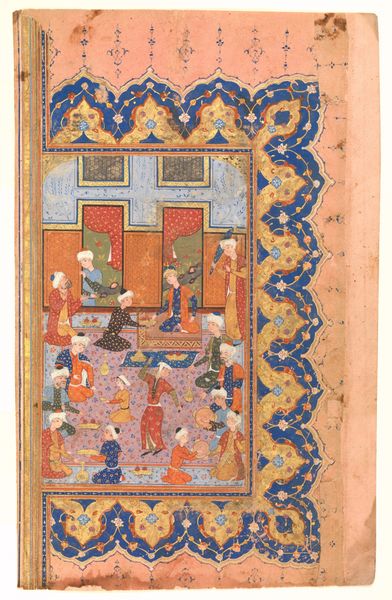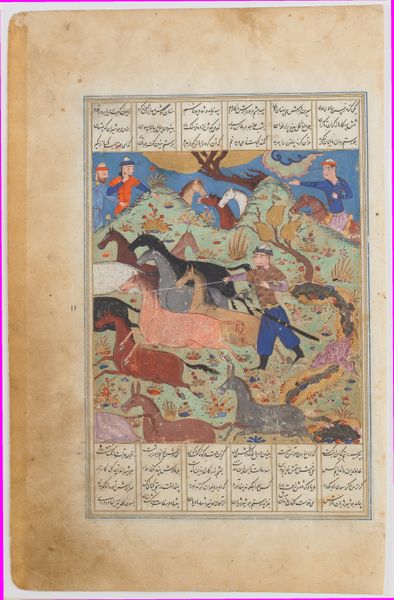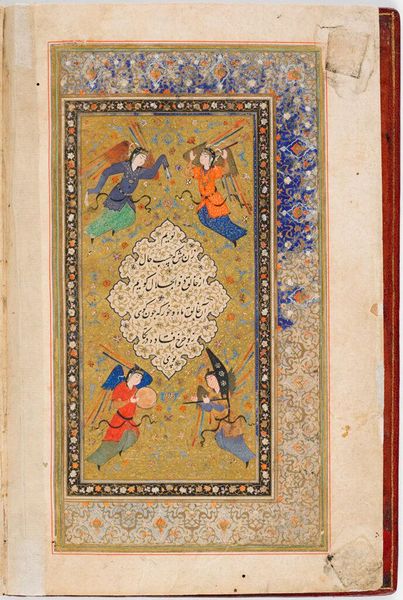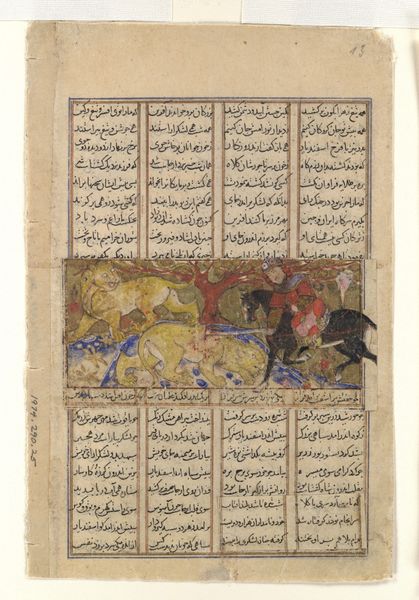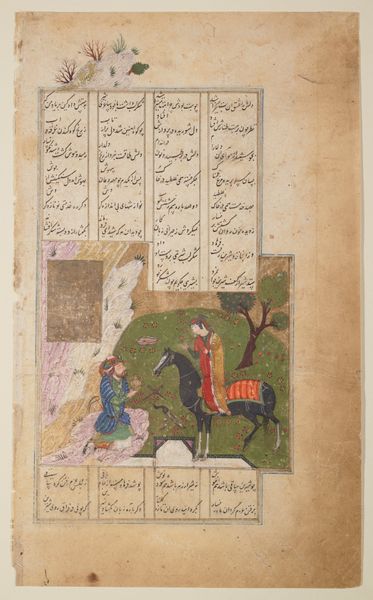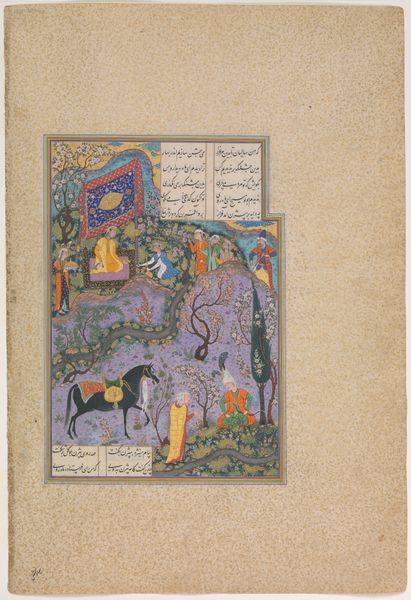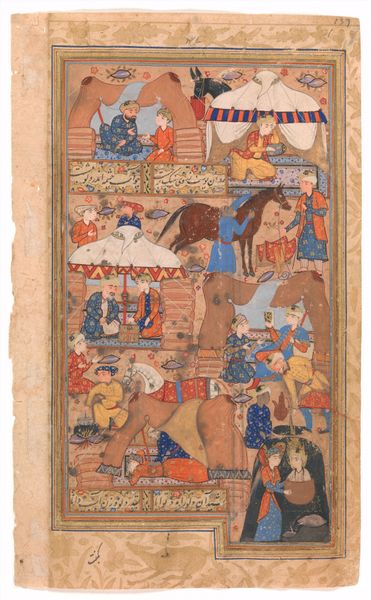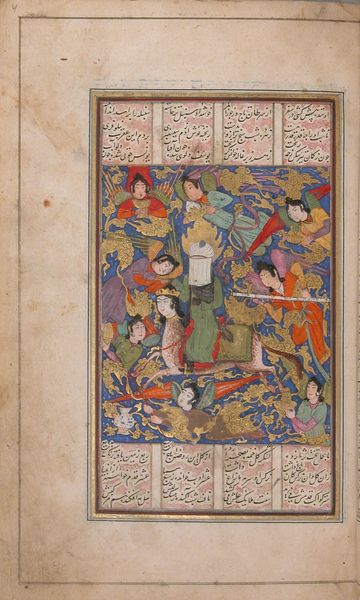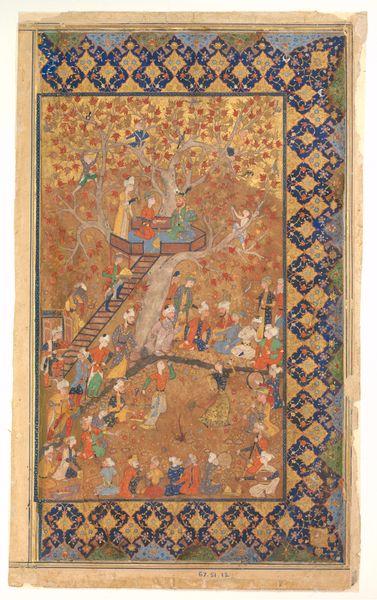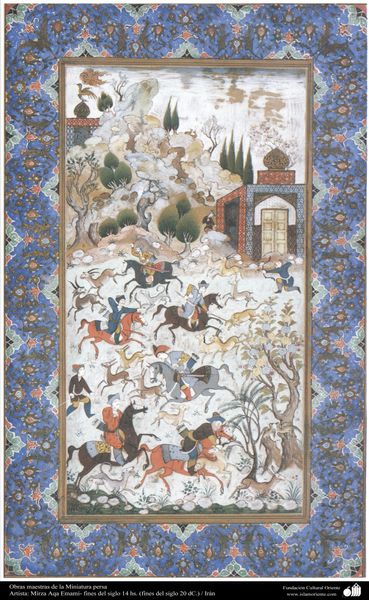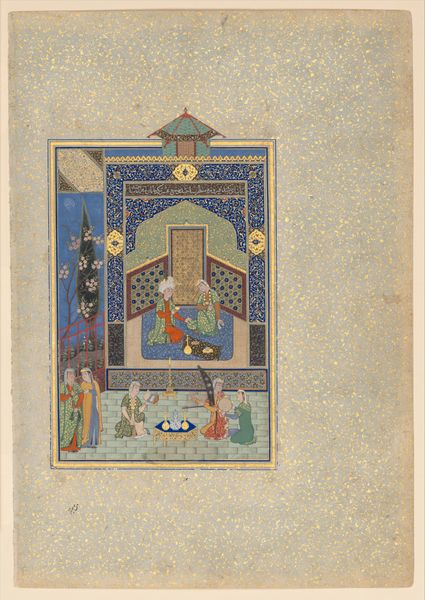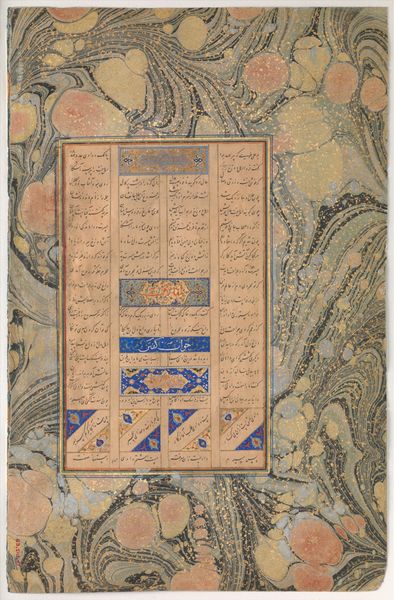
Divan (Collected Works) of Jami 1455 - 1505
0:00
0:00
painting, watercolor
#
water colours
#
animal
#
painting
#
landscape
#
figuration
#
watercolor
#
coloured pencil
#
horse
#
islamic-art
#
genre-painting
#
miniature
Dimensions: H. 10 (25.4 cm) W. 6 in. (15.3cm)
Copyright: Public Domain
Curator: Editor: Okay, next up is "Divan (Collected Works) of Jami" from between 1455 and 1505, currently at the Met. It looks like watercolor and coloured pencil on paper, and depicts a royal hunt in miniature. It’s incredibly detailed. I’m struck by the sheer labor involved. What else do you see when you look at this piece? Curator: This is precisely what draws me in: the intersection of the means of artistic production and social context. Consider the pigments – where did they come from? What was the process of grinding and mixing them? Who was involved in the making of the paper? This wasn't just an artistic endeavour; it was an industry, reliant on various types of labour, skilled and unskilled. Editor: That’s interesting. I was focused on the figures themselves – the hunters, the animals – and their roles within the composition. Are you saying the materials themselves tell a story beyond just the visual narrative? Curator: Absolutely. The type of materials used also reflects the patron's status and what kind of artistic output they demanded. This isn't simply a pretty picture, it's the end result of vast amount of resource expenditure and technical skills which reflected and reproduced the hierarchy and class relations. Were all these people being represented here of the same status or skill? Editor: I hadn't considered the expense involved. The detail makes me assume the paper and pigment were expensive, thus the people consuming or commissioning such art were probably of higher status and rank. Curator: Exactly! So, understanding the value placed on the materials – the paper, the precious pigments – shifts our perception, right? It allows us to ask broader questions about class, craft production, and cultural value. Editor: Definitely. Thinking about it that way, the "collected works" mentioned are actually also about the people that collected and worked in putting the whole miniature itself together. That makes me want to consider art as more than just image! Thanks for broadening my perspective! Curator: And thank you. It is a crucial point. By engaging with the materiality of the art we begin to better grasp what is made possible through production.
Comments
No comments
Be the first to comment and join the conversation on the ultimate creative platform.
